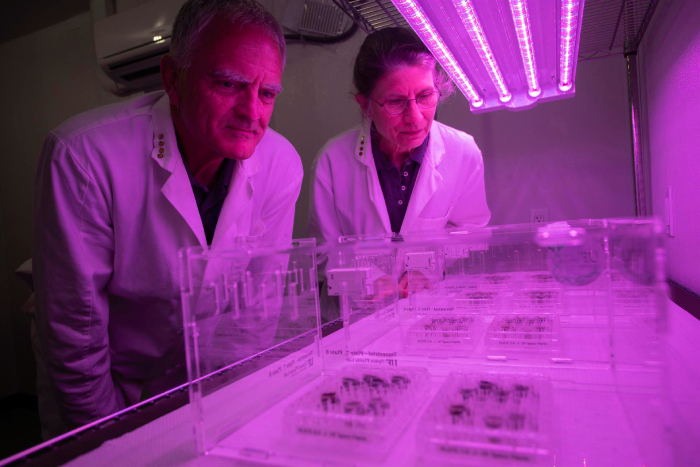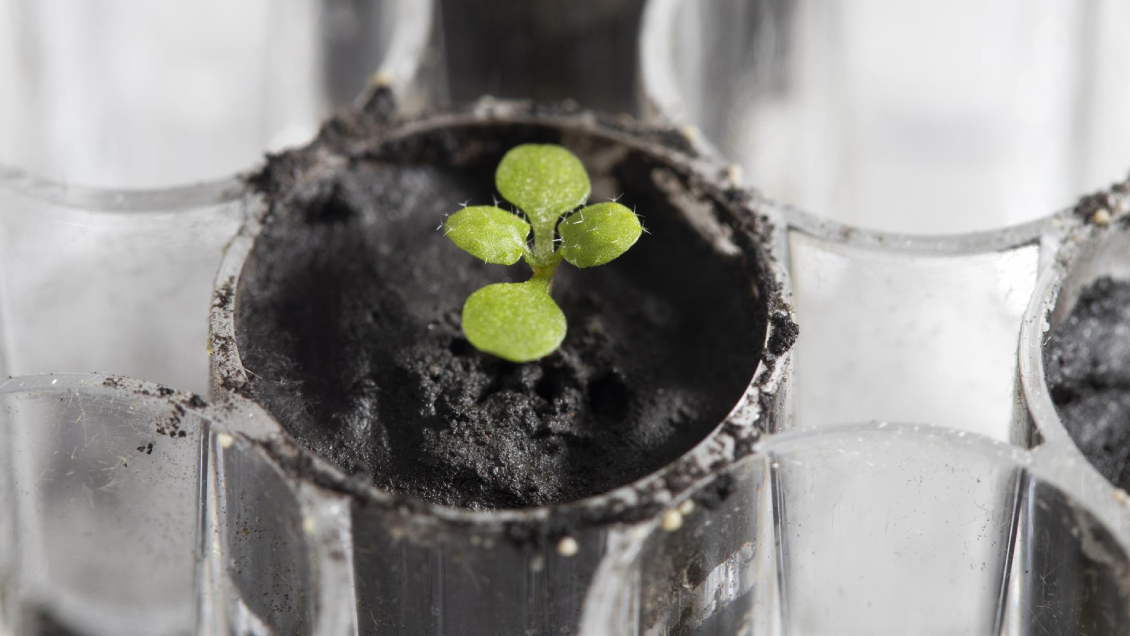Lunar farms are coming ‘very soon’ and their fruits and vegetables will taste ‘wonderful’ just like those on EarthAmerican molecular biologist says Anna Lisa Paulwho drove The team announced last week that for the first time it was possible to grow plants in soil from the moon.
The University of Florida group led by Paul and Rob Ferrell managed to grow a Scream (Arabidopsis thaliana) in a few grams of moon dust obtained in Apollo missionsIt is the “first step” for humanity to be able to grow vegetables outside the land.
But now that they know that it can actually be grown on lunar soil, this process, the researcher predicted in a video interview with Eveit will be very fast and “Very soon” there might be some kind of lunar farm.
“It probably won’t be within the next five years, but it may be within the next ten years.”emphasized the first steps of space farming, which coincides with NASA’s new push to return to the moon with manned missions via Artemis programwhich aims to put astronauts on the moon in 2025.

Plants grown in a lunar simulator (1) with those grown in lunar soil (d) after 16 days of control at the Foundation Laboratory in Gainesville, Florida (USA). Credit: EFE/Tyler Jones/UF/IFAS
multipurpose plants
Not only will these crops be vital to making future space missions more self-sufficient, but The plants will help clean the water and air from the colonies, Without relying on something less realistic but very important, psychological side What does it mean that they are in such inhospitable places as Mars or the Moon.
It is considered that plants that are transported to outer space, must have “Multiple uses” And you will have to weigh how much material you can get from it compared to what is wasted.
“It must be A rather useful and powerful thing. NASA has done a lot of work on what they call advanced life-supporting crops, and foods like radishes, turnips, and various types of leafy greens are the easiest to grow and have the least amount of waste.”
First, Paul said, the crops must be “scaled up” to “a size that can accommodate some simple crop plants.”

Anna Lisa Ball (left) and Rob Ferrell (right) work on lunar soil in their lab in Gainesville. Credit: EFE/Tyler Jones/UF/IFAS
So far, the plants grown in his lab were no more than a few millimeters tall and performed worse than those grown in earth ash.
Thus, those in regolith or lunar soils grew “slower, took longer to develop expanded leaves, and had more stunted roots” than those in volcanic soils, as Paul and Ferrell explain in their article published last week in Communication biology.
In addition to the challenge of extending what you have learned in your lab, you should not neglect the challenge of achieving it Engineering needs a lunar greenhouse capable of giving plants what they need in an ‘energy-saving’ wayincluded Water and some nutrients It must be done in the same country.
Despite all the challenges, he appreciates it The taste of fruits and vegetables will not be much different from that of earthlings.
“I don’t think it would have any effect (the type of soil), that those grapes were very different from those you grow in France or the grapes you grow in Chile. There will certainly be some differences, but I imagine there will be no fundamental difference. “I think the grapes will still taste great,” he said.

Rob Ferrell (left) and Anna Lisa Paul (right) look at plates filled with partly lunar soil and partly soil controlled under LED grow lights in their Gainesville lab. Credit: EFE/Tyler Jones/UF/IFAS
Fresh moon salad
For this reason, it is believed that despite all the ordeals that would entail growing on the Moon, there would be wide selection of agricultural products in space, because, in addition, humans will soon understand how to “organize” and “adapt” the lunar soil for agriculture.
“It’s something we can easily overcome”about studies that will begin with lunar soil samples that have been and will continue to be used to grow crops, which included receiving water and nutrients, and those that remain intact since their arrival on Earth.
After being planted in the lunar regolith, the watercress seeds were grown for 20 days, after which the samples were removed for biochemical analysis and to see how they responded at the molecular level, to see what “tools” the plants use to grow and survive in these conditions.
That way they’ll know what can be done to help them grow, whether it’s to make the soil “more friendly,” genetically modify the plant, or choose crops that can do best in those kinds of environments, because, he says, there are many different kinds. of plants they grow on Earth in a “hostile environment” and do so without “engineering”.
For all these reasons, he announced that in 100 years astronauts will be able to eat a fresh salad harvested on the moon itself: “Where there are humans, there will always be plants.”

“Problem solver. Proud twitter specialist. Travel aficionado. Introvert. Coffee trailblazer. Professional zombie ninja. Extreme gamer.”




More Stories
With a surprise in the case: a strange cell phone from Nokia was introduced
PlayStation Stars: what it is, how it works and what it offers to its users | Sony | video games | tdex | revtli | the answers
t3n – Digital Pioneers | digital business magazine